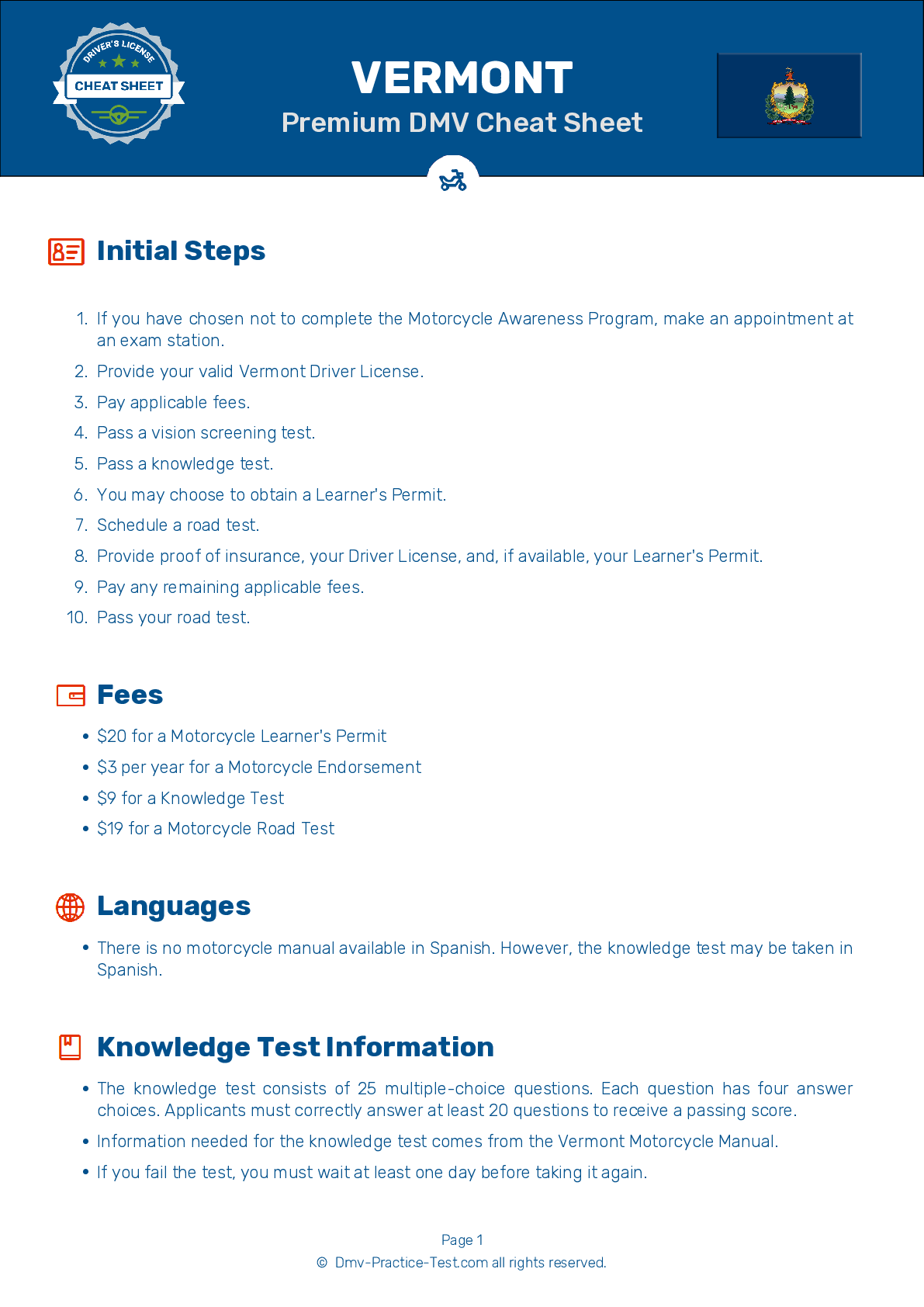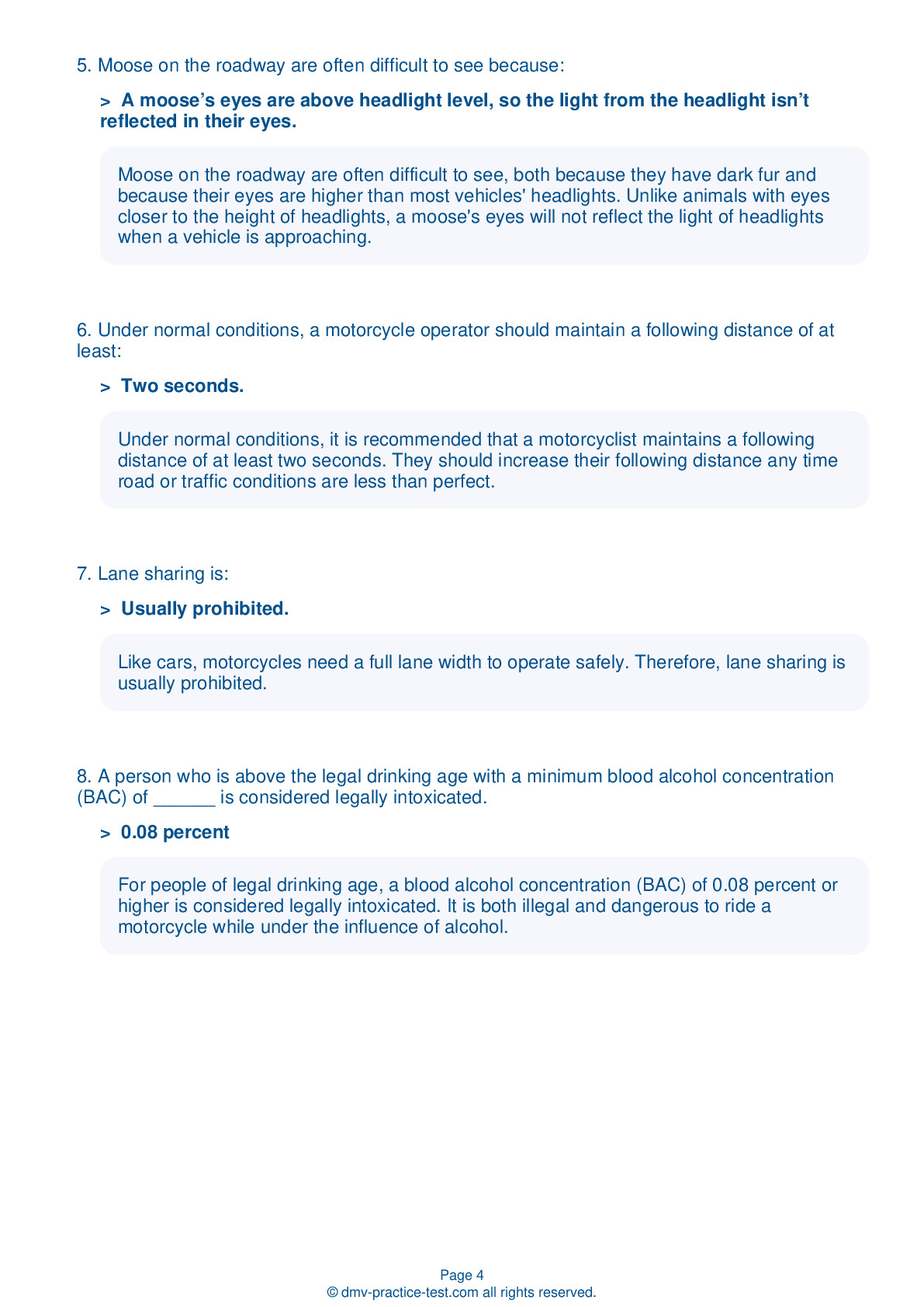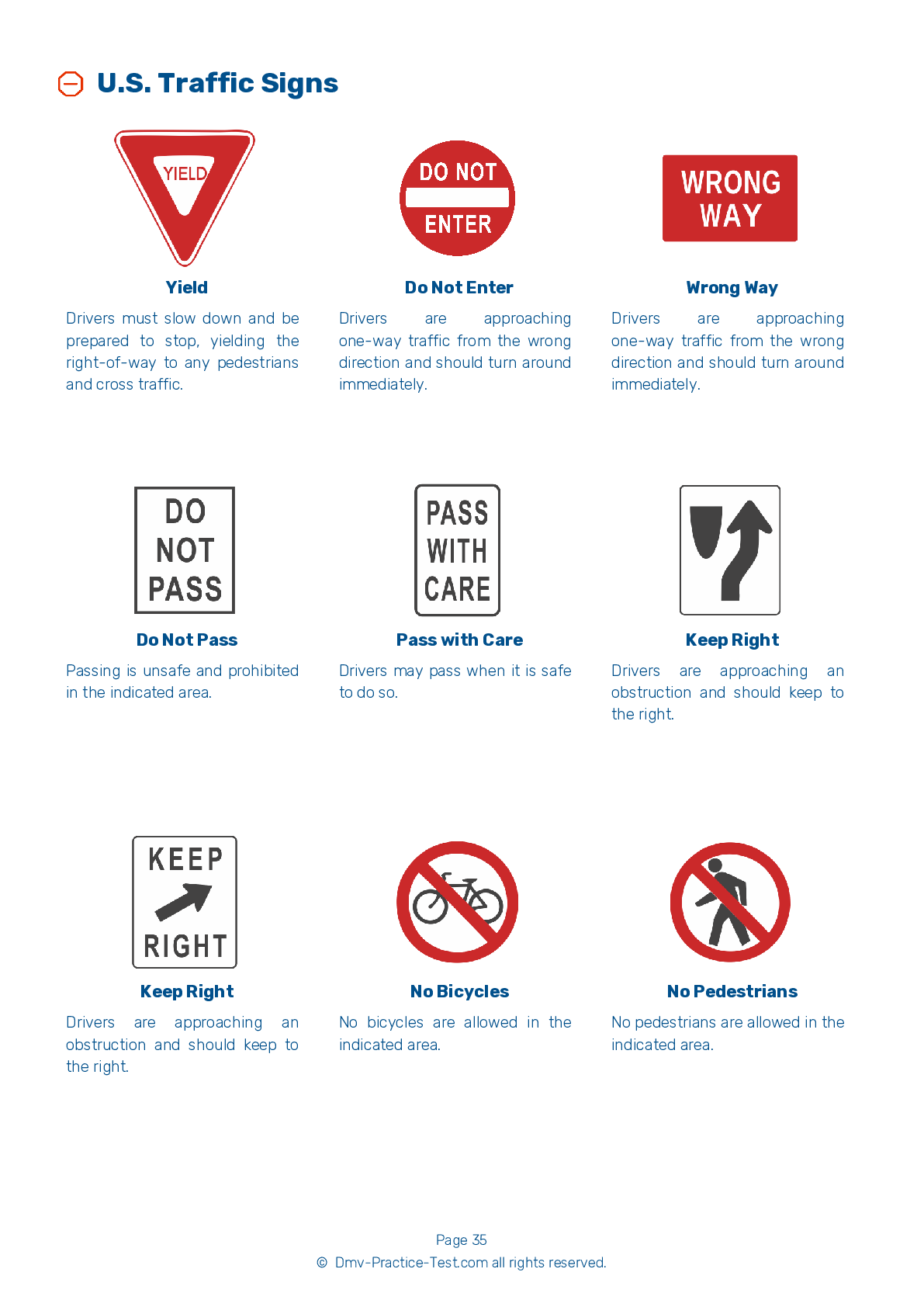Motorcycle Test | License VT 2026 | FREE Online Practice! #5
Take this FREE motorcycle test (license in VT 2026) to check your knowledge of the road rules. To improve your results, download a motorcycle handbook online, study theory, and practice for free on our website. Still worried about how to get a motorcycle license in Vermont in 2026? Check our website for more sample tests, train as much as possible, and boost your grades!
1 . Moving into another lane while taking a curve is often the result of:
Trying to enter a curve or turn at a speed that is too fast for conditions may cause you to cross into another lane of traffic or leave the road entirely.
2 . A person who is above the legal drinking age with a minimum blood alcohol concentration (BAC) of ______ is considered legally intoxicated.
For people of legal drinking age, a blood alcohol concentration (BAC) of 0.08 percent or higher is considered legally intoxicated. It is both illegal and dangerous to ride a motorcycle while under the influence of alcohol.
3 . Maintaining a space cushion between your motorcycle and its surroundings is important because it:
The only way to be sure you will have enough time to react to mistakes made by other drivers is to leave plenty of space between you and the vehicles around you.
4 . Most motorcycles:
Motorcycles generally have two brakes, one for the front wheel and one for the rear wheel.
5 . Lane sharing is:
Like cars, motorcycles need a full lane width to operate safely. Therefore, lane sharing is usually prohibited.
6 . A group of riders should pass another vehicle:
On a two-lane highway, a group of riders should pass another vehicle one at a time. The second rider should not begin to pass until the first rider has safely re-entered the original lane. Riders should continue in this pattern until they have all safely passed the vehicle.
See the exact questions that will be on the 2026 Vermont DMV exam.
99.2% of people who use the cheat sheet pass the FIRST TIME
Jeneen was tired of paying $5/gallon. She got herself a scooter that required the motorcycle license. She studyed the motorcycle test cheat sheet and passed her test the next day!
Christopher tells us how he knew nothing prior to obtaining the motorcycle study guide, and he only got one question wrong because he clicked on the wrong answer by mistake.



